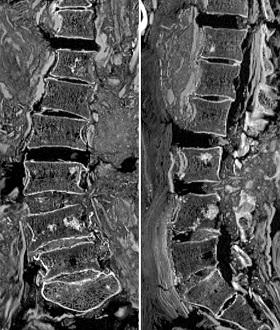Using AI to control energy for indoor agriculture
30 September 2024
Published online 12 February 2012

Carlos Prates
The study, published in the International Journal of Paleopathology, will help researchers understand the origin and evolution of cancer and other diseases in ancient populations. "Modern pollutants are not necessarily solely to blame. Genetics or pollutants in the ancient world might have also caused cancer," says Salima Ikram, an Egyptologist at the American University in Cairo (AUC) who worked on the discovery.
"I think that our finding mostly adds to the idea that cancer was not a complete rarity in the past, but was only very difficult to detect it in ancient remains," says Carlos Prates, a radiologist at Integrated Medical Imaging (IMI), a private medical centre in Lisbon.
This is the second oldest case of prostate cancer discovered in the world. The earliest ever case discovered in the world was in a 2,700-year-old skeleton of a king found in Russia. Ikram suggests that cancer is more widespread today simply because people are living longer, rather than attributing it to lifestyle changes that came with the industrial age.
It was the first time the three Egyptian mummies housed at the National Archaeology Museum in Lisbon were subjected to X-ray computer tomography (CT). Ikram and Prates agree that the discovery could have been made earlier, but a lack of money and interest meant the mummies were not studied with modern equipment. "The large number of CT mummy scans published before used older machines," Prates explains.
The researchers employed a highly sensitive multidetector CT to scan the mummies in higher resolution than was possible before. They discovered the remnants of a malignant tumour in one.It took the team a little over two years to finally complete the study. "We had some difficulty in obtaining the payment for the specialized transport of the mummies," explains Prates. A specialized team was finally hired to transport the mummies to and from the museum and within the radiology units.
The bone pattern found on several small, round, dense bone lesions located mainly in the pelvis, spine and limbs, suggesting a case of prostate cancer. "This is very rare and the first case of an oncological diagnosis in a wrapped mummy without use of invasive techniques," says Prates.
doi:10.1038/nmiddleeast.2012.15
Stay connected: